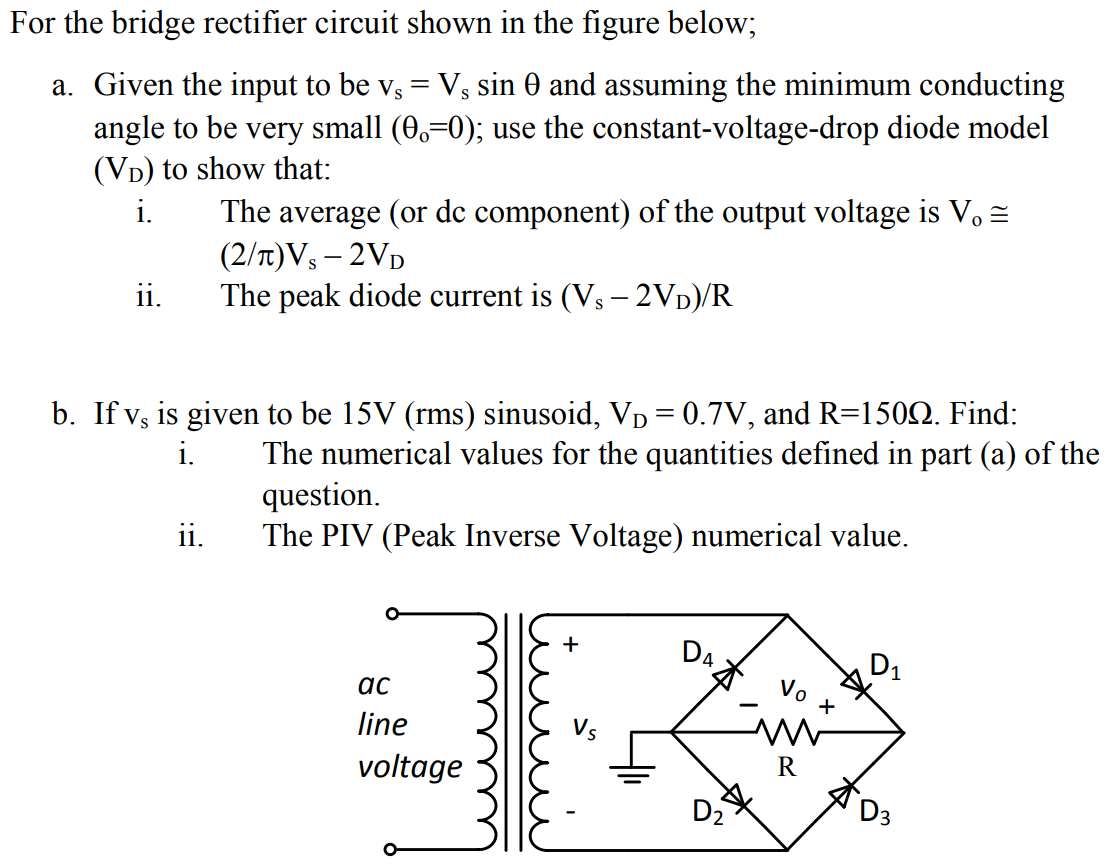For the bridge rectifier circuit shown in the figure below; a. Given the input to be vs = Vssinθ and assuming the minimum conducting angle to be very small (θ0 = 0); use the constant-voltage-drop diode model (VD) to show that: i. The average (or dc component) of the output voltage is Vo≅ (2/π)Vs − 2VD ii. The peak diode current is (Vs − 2VD)/R b. If vs is given to be 15 V (rms) sinusoid, VD = 0.7 V, and R = 150 Ω. Find: i. The numerical values for the quantities defined in part (a) of the question. ii. The PIV (Peak Inverse Voltage) numerical value.
